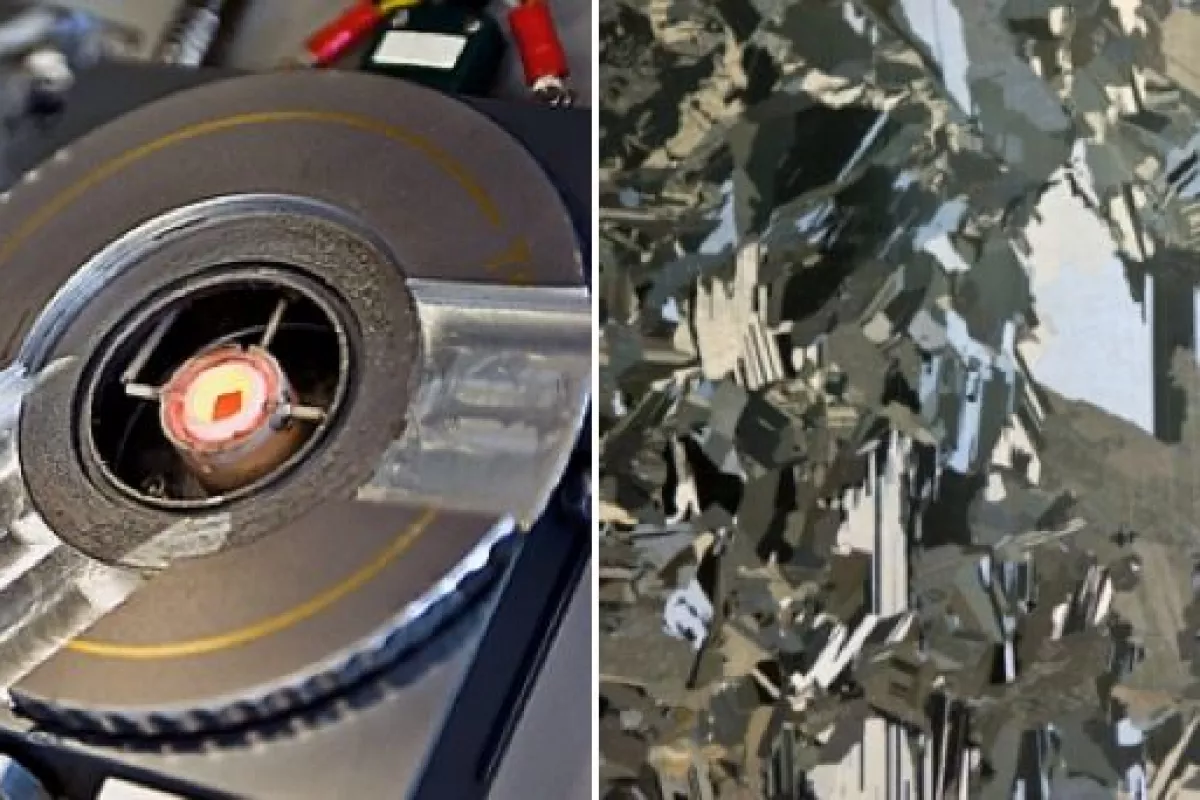You might think it was a simple law of physics that most solids melt as they get hotter, and harden as they get colder. A few materials, however, do just the opposite – they melt as they cool. Researchers at the Massachusetts Institute of Technology (MIT) have recently discovered that by dissolving certain metals into silicon, they can add that silicon compound to the relatively short list of exotic substances that exhibit retrograde melting. Their accomplishment could ultimately result in less expensive solar cells and electronic devices.
The team started by creating a “sandwich”, made from two thin sheets of silicon on the outside, and a mixture of copper, iron and nickel between them. This was heated to a point that was below the normal melting point of silicon (which is 1414C/2577F), but high enough to cause the filling to dissolve, thus causing the silicon to become supersaturated with the metals.
Not unlike clouds that become saturated with dust particles, when the supersaturated silicon cools below 900C(1652F), the metals precipitate out in liquid form, turning the material as a whole to a slush-like consistency. Impurities originally present in the silicon tend to migrate into the liquid, leaving purer silicon behind. The MIT team believe that this means manufacturers could use less pure, less expensive grades of silicon for items such as solar cells or electronics, and purify them in the production process. They think it could also be used in the production of silicon nanowire arrays.
Team leader Tonio Buonassisi predicted in 2007 that it should be possible to induce retrograde melting in silicon, but it wasn’t until now that the technology existed to make it possible. That technology includes a “hot-stage” microscope, which let the team precisely control the heating and cooling of the material. It also includes high-power synchrotron-based X-ray sources at Lawrence Berkeley National Laboratory in California and at Argonne National Laboratory in Illinois, which allowed the researchers to actually see what was happening within the supersaturated silicon.
The MIT researchers are now trying to determine just how efficient and stable the liquid inclusions are as absorbers of impurities, and whether or not they can keep those impurities localized throughout the production process.





